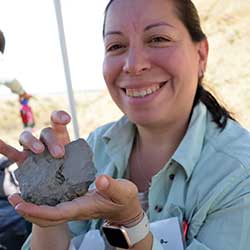 Carolina Castro
Carolina Castro
High school teacher, Bronx, New York
Carolina teaches high school Earth Science at a 6–12 public school in the Bronx in New York City. She is also a Math for America Fellow and saw the DIG Program as another unique opportunity to grow her professional network and learn alongside similarly dedicated peers.
Carolina is committed to bringing authentic learning experiences to her students, such as introducing a hydroponic garden curriculum into her science classroom, which was a major hit with her high schoolers. She admits, however, that it can be challenging to bring the same hands-on learning experiences to her earth science classes in a school community largely devoid of natural landscapes. Participating in the DIG Field School gave her access to new resources and first-hand experiences to engage her students:
“This program helps me bring the wonders of field work into the classroom. My students enjoy learning about the process of lithification and how fossils are formed in the beautiful landscape pictures taken from this field experience.”
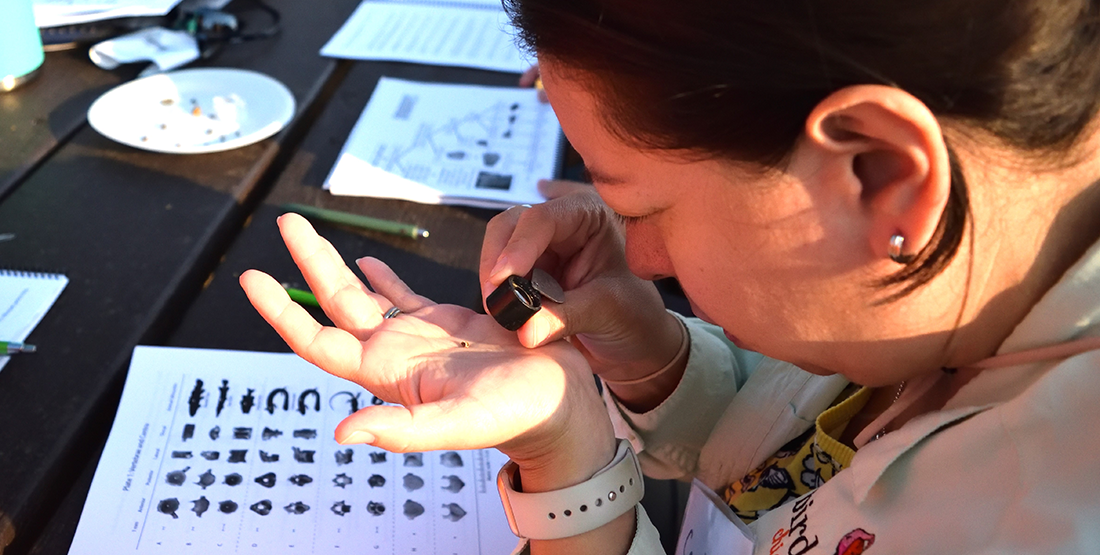
Through her participation in Field School, she has been able to bring a broader perspective back to her students through multimedia tools and virtual “field trips”:
“I am currently teaching about the rock cycle and am using images from my field experience with my students so that they can make the connection between the environment of rock formation and the type of rock found in this area. I plan on enhancing the learning in my classroom by ordering DIG Boxes to support my school curriculum.”
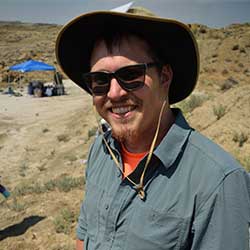 Jacob Jensen
Jacob Jensen
Middle school teacher, Owatonna, Minnesota
Jacob teaches 6th grade Earth Science and 7th grade Life Science at Owatonna Middle School in Owatonna, Minnesota. Jacob applied to the DIG Program as a way to enhance hands-on learning experiences for his students, which he hopes will inspire them to pursue higher science education opportunities. He says that the practical field experience he gained through DIG was just what he was looking for:
“As someone who has always been fascinated by fossils and dinosaurs, the real take away from the trip was being able to experience a week in the life of a paleontologist, and the thrill of discovery.
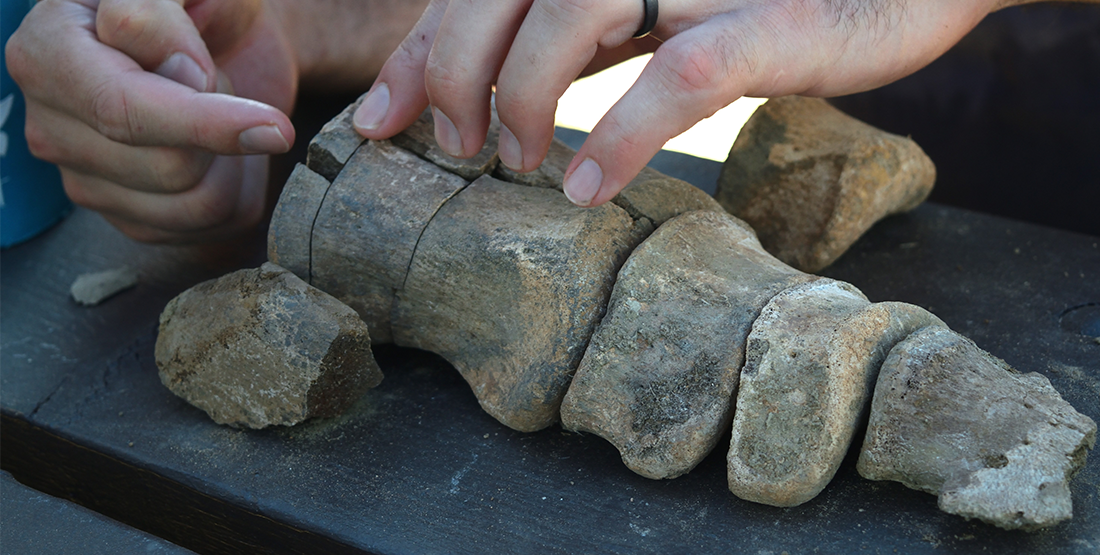
“My favorite memory was from group project day, when the group decided to forgo looking for microfossils and focus on the macrofossil clearly visible on the surface. We collected a toe that likely belonged to an Edmontosaurus. It was a highlight of the trip, and thrilling to see the toe come together back at camp.”
Jacob explains that he was able to take his field school experiences—such as crawling on the ground to search for microfossils and using a Jacob's Staff to determine the distance of a fossil from the K-Pg boundary—and turn them into stories for his students, allowing their imaginations to carry them into the field. He also leveraged his DIG knowledge to design more practical lab activities:
“I have a small collection of local Minnesota fossils, and the students are able to experience some of what paleontologists get to do in the field by identifying fossils and picking them out from the clay and limestone…We use similar tools and methods to identify local fossils, and [then were] able to identify Burke Box microfossils as a test of our newly developed fossil identification and sorting skills.”
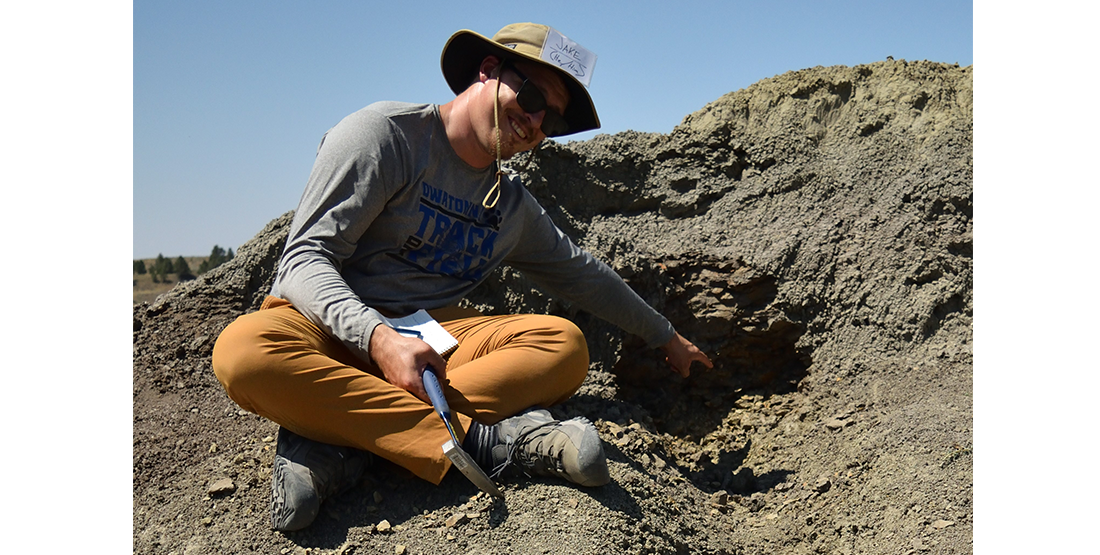
Jacob’s students were especially thrilled to learn that by identifying microfossils in their classroom, they would be supporting authentic paleontological research happening at the University of Washington:
“When I told the students we were going to help the Burke Museum sort fossils, they were so excited—I have never seen more smiles in the classroom at one time. This has been the best educational program I have been a part of.”
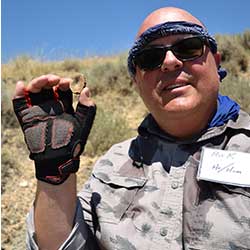 Richard Gifford
Richard Gifford
Middle school teacher, Provincetown, Massachusetts
Rick teaches 6-8 Science and Engineering at Provincetown IB Schools in Provincetown, Massachusetts. Rick appreciates being able to teach in such a unique setting, which he describes as remarkably diverse for a small public school system in rural Massachusetts:
“Provincetown IB School is at the farthest tip of the US. Many of our students are from the Caribbean and Central America, as well as local families that go back many generations.”
Rick attended Field School with his wife Nancy, who also teaches middle school science. He describes his time at DIG as a “once in a lifetime opportunity,” saying he would recommend the program to any science teacher:
“The DIG Field School was one of the best teacher professional programs I’ve ever attended. My interests have always been in evolutionary biology and seeing how landforms change over time. DIG Field School allowed me to go deeper in my understanding, and provide a first hand appreciation of the science and research methodology.”
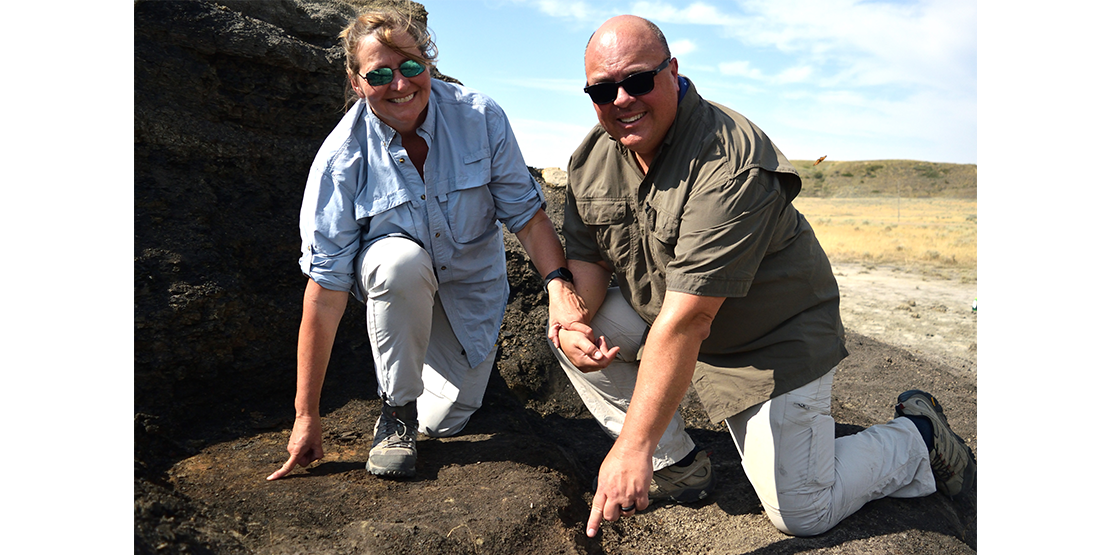
This fall and winter, Rick used his experience with DIG to springboard an wide array of science lessons:
“The opportunity for my students to see how and where fossils form is an amazing opportunity. I was able to make a video documenting our time in the hot badlands this past summer. This led to lessons on evolution, sedimentary deposition, and the limits of human physiology, just to name a few!”
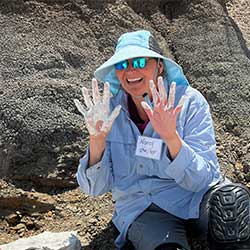 Nancy Gifford
Nancy Gifford
Middle school teacher, Chatham, Minnesota
Nancy teaches general science and robotics at Monomoy Regional Middle School in Chatham, MA. While Nancy doesn’t have a formal science degree, she has been teaching middle school science for a few years and was looking to augment her training in Earth Science content, a self-described area of interest. She shared that living in a rural, coastal community can make it challenging to find professional development opportunities that meet her needs, and saw the DIG Program as the perfect fit for her interest in immersive, hands-on science learning experiences.
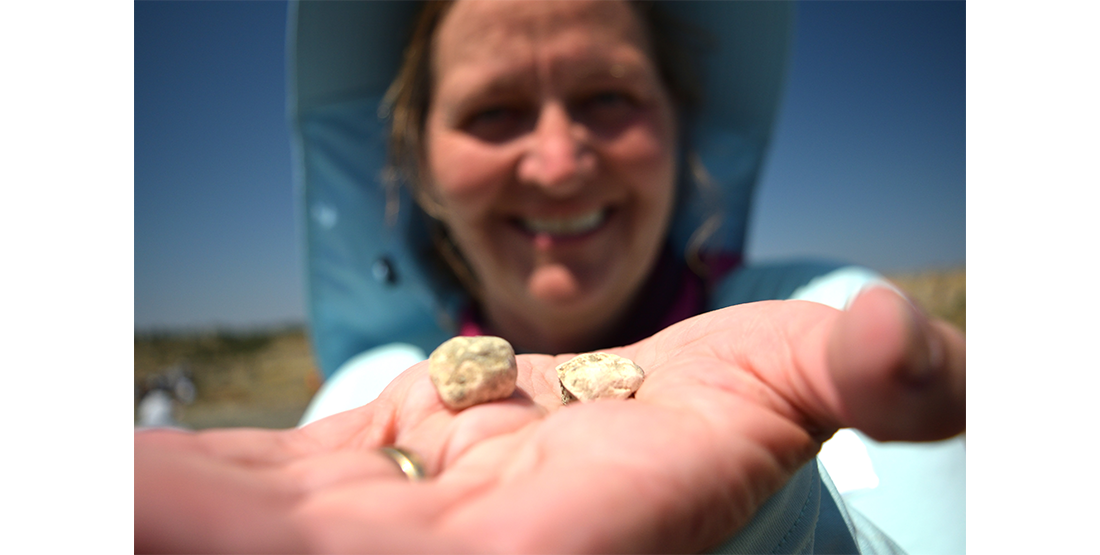
“The DIG Program was the opportunity of a lifetime. We had a week of field work with the paleontologists, geologists, and biologists who all shared their work and research with us. I will never forget working to uncover a triceratops frill! I even got to help put a jacket on it. When we arrived they told us we would be conducting our own research by the third day. I didn't think it was possible, but there we were out investigating our own site. I had no idea how tough the work is nor the level of patience required to take a fossil from the ground to the lab to the museum.”
Nancy already has mapped out how she plans to incorporate this new knowledge into her classes later this year:
“I am looking forward to sharing my experience at DIG with my students in the spring when we do our Earth Science unit. I have a much better understanding of paleontology and how fossils and rocks are used to create an understanding of Earth's climate history. I can't wait to bring the DIG Boxes into my classroom and give my students a taste of what I experienced.”
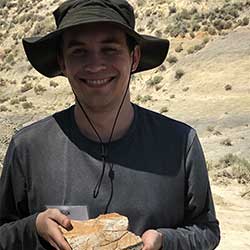 Nick Lowrey
Nick Lowrey
High school teacher, Renton, Washington
Nick teaches AP Biology and Anatomy and Physiology at Lindbergh High School in Renton, Washington. He finds he is energized by his school community and the students he works with:
“We have a wonderful group of diverse students from all walks of life at LHS, and I am grateful to have the chance to teach and learn from them.”
Nick enjoyed both the scientific content as well as the social and community interactions he gleaned from his time at Field School:
“The DIG Program really helped me understand the logistics and passion behind paleontological work. It was really inspiring to see the connections that the DIG crew were able to make with the residents of the area and hear the interesting stories that stemmed from these connections. It made the whole experience feel more authentic and grounded. In addition to the teaching strategies shared in the Field School, I feel that this context will help me in making my future lessons more personalized and involved.”
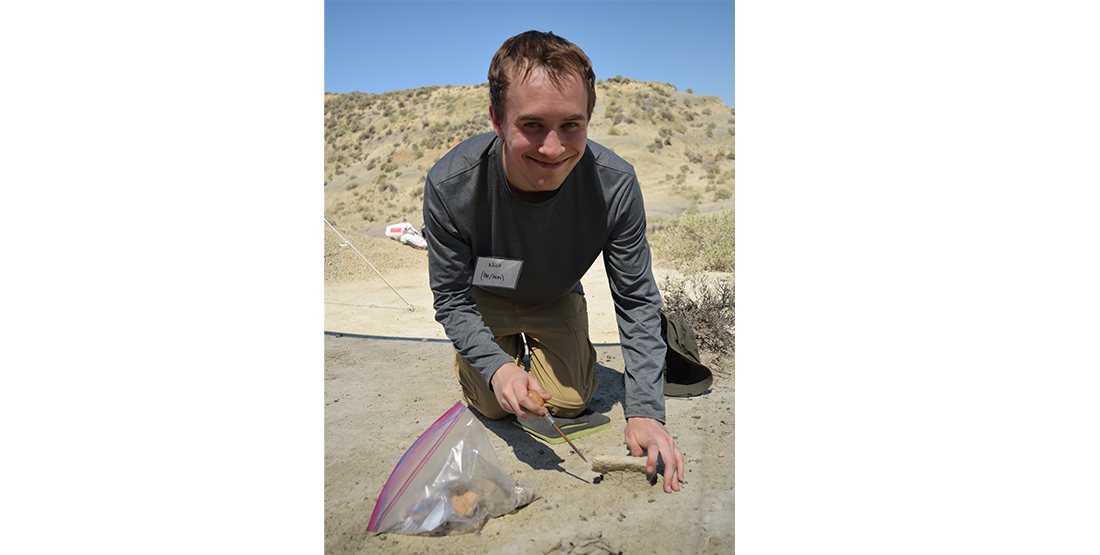
He left inspired and already has big plans on ways he’ll adapt the DIG curriculum to met the learning goals of his students:
“During our Evolution and Natural Selection unit in AP Biology, I plan on using resources from the DIG Boxes to help create a series of lessons that will have students investigate changes in flora and fauna over the course of specific geological periods, and use this along with geological data to interpret the conditions of the time and how they may have driven evolution.”
To other teachers considering the program, he offers this perspective:
“I was initially unsure of whether I was making the right choice to fly out to Hell Creek, Montana in the middle of my summer break to dig up fossils in the sweltering heat. After having been a part of it, I can safely say that it was a fun and valuable experience, and I encourage anyone who has the chance to go and see what it's all about.”
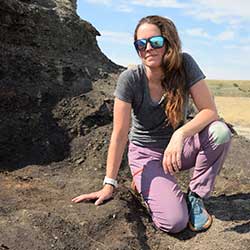 Hannah Sullivan
Hannah Sullivan
High school teacher, Saint Paul, Minnesota
Hannah teaches honors chemistry, anatomy and physiology, neuroscience, environmental chemistry, and environmental science at Mounds Park Academy in Saint Paul Minnesota. In addition to her high school teaching course load, she also advises a student-led STEM education club that runs STEM programs for lower school students. Hannah admits that teaching so many subject areas has required a lot of self-learning on her part, which has often been a very solitary pursuit. She saw the DIG Program as a way to learn in community and gain new hands-on experiences:
“It has been a long time since I've been able to learn something brand new in the field with peers. The DIG Field School experience reinforced my commitment to experiential learning and discovery-based science education.
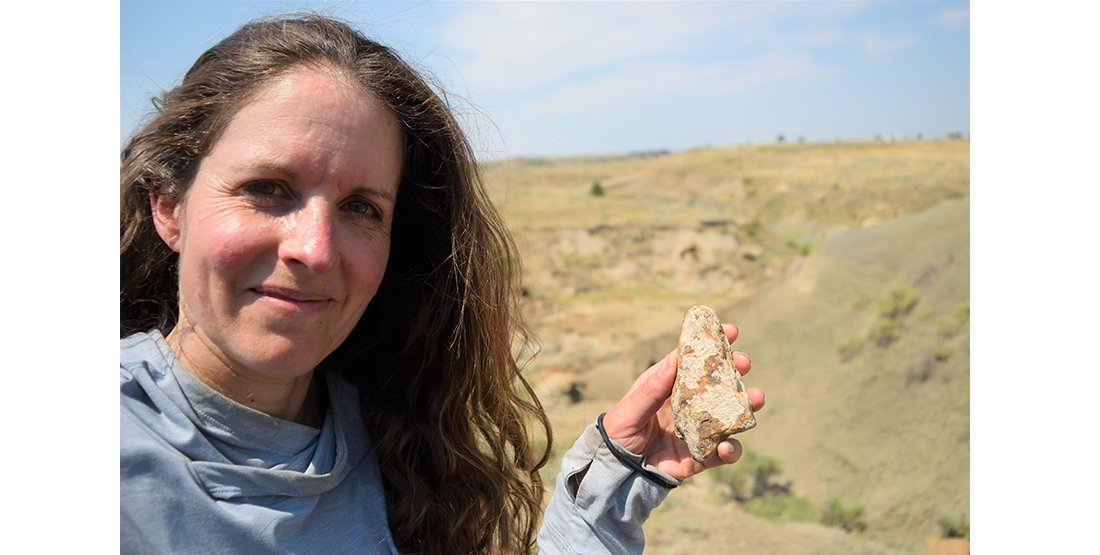
“I loved every part of DIG School, honestly, but the most meaningful day for me was onsite time during Group Project Day. It was brutally hot and we had to work together as a team while making sure that everyone was safe. We had an interesting site but using all that we had learned over the week, our recommendation at the end of the day was that it probably wasn't a site worthy of further explanation. All of the specimens we found were too weathered to identify and amounted to just fossils, not data. I know we were all hoping for an exciting discovery — looking at you articulated hadrosaur toe group — but this was also a chance for me to live the adage I always emphasize to students, ‘Science is not about getting the world to do what you want it to do.’”
Her experience at DIG Field School has inspired her to take a more interdisciplinary approach to her science teaching:
“I've incorporated a lot of evolutionary biology into my courses, but what I learned at the DIG School has helped me realize how important it is to explore geologic timescales and larger time scale evolutionary history with students. I don't teach "earth" science but with that being absent from many high school curriculums, it's important, and logical to work to incorporate this into my chemistry and environmental science classes. I think that just hearing me excited about a science adventure out in the world and my own continued learning is really important to my students. They are all interested in a student trip to Hell Creek!”
Hannah notes that one of the advantages of the DIG Box curriculum is the opportunities it provides for multi-age and multi-generational learning:
“I plan to use the DIG Boxes in the spring with my environmental science class. That class is made up of 12th graders but will partner with our 1st and 4th grade classes at MPA to explore the boxes together….We also have a heavily-involved community at our school and I'd love to engage them in a family event surrounding these topics and building on what I learned at DIG school. Learning is a lifelong pursuit!
Hannah also shared a special message of gratitude for the DIG Team:
“I think this is a fabulous program and I'm very grateful that the University of Washington and the Burke Museum make teacher education a priority. I know that the DIG Field School is a huge endeavor to put on but I also think it is a fabulous way to reach a large number of schools and students and inspire educators. The last several years in education have been challenging and these sorts of experiences keep me energized. Thank you! And my students thank you as well! They all know the profound impact this experience had on me.”
Interested in participating in the DIG Program? 2024 Field School applications are open through February 15, 2024. Learn more about our field school research sites and apply here.

